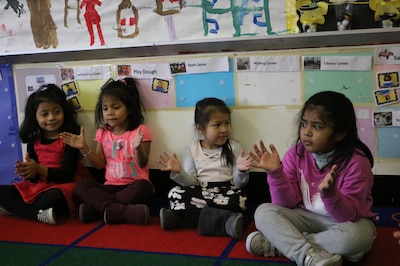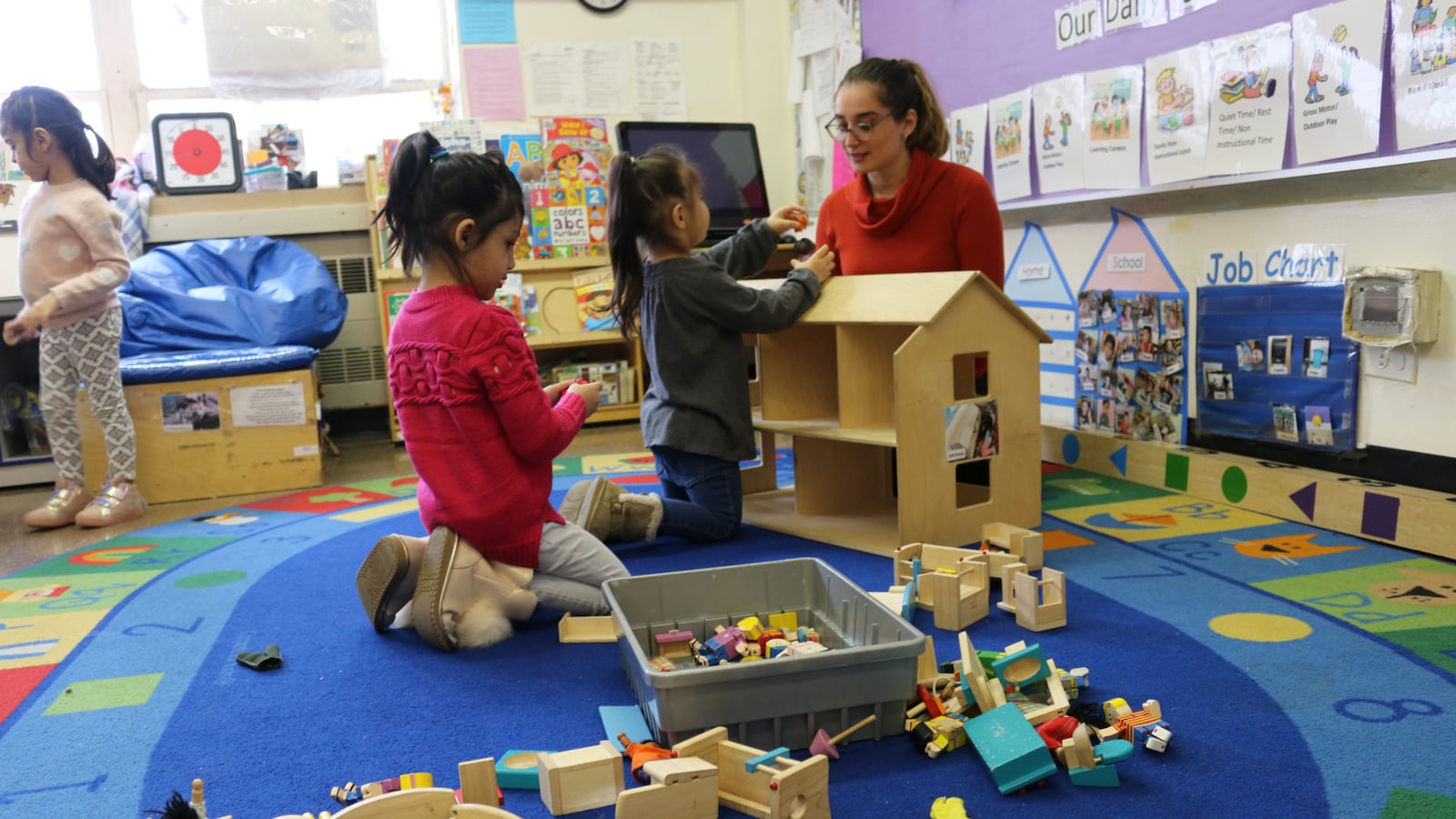Inside classroom No. 12 at Brooklyn’s HeartShare Taranto preschool, children play side-by-side with blocks, puzzles, or at a pretend kitchen each day. Roughly half are students with disabilities, including physical impairments, autism, and speech delays. The others are typically developing children.
The Bensonhurst program is one of hundreds of community-based organizations that are part of Pre-K For All, the city’s free preschool program for 4-year-olds. Classroom No. 12 is supposed to have at least two certified teachers — one who is qualified in general education, and one qualified to work with children with special needs.
But the special education teacher left at the beginning of the year in search of a higher paycheck at a public school. The spot has been vacant ever since.
“We can’t find a teacher,” said Taranto’s director Kathy Toal, who scrambles daily to fill the hole, leaning on a stream of substitutes or pulling staff from other areas, like the center’s curriculum expert. “Anyone who has a teaching license goes in the room.”
In a quirk of the system, general education teachers at privately-run preschools like Taranto are paid through city-funded contracts, while the special education preschool teachers they work alongside are paid mostly by the state. The general education teachers recently won massive raises to close the pay gap between privately-run preschools and their public school counterparts. But no such raise was given to special education pre-K teachers.
That means teachers serving students with disabilities — arguably some of the children with the highest needs — are making the lowest salaries. Special education teachers might earn about $30,000 less, on average, than general education teachers they sometimes share a room with, according to advocates. Preschool directors who run special education classrooms fear it will now become even harder to hold onto their teachers, who have more opportunities to leave for higher paychecks in programs that enroll typically developing children.
For years, all teachers in private programs had been paid tens of thousands of dollars less than their peers in public school classrooms. Preschools complained that the disparity made it difficult to prevent teachers from leaving. So, the City Council and Mayor Bill de Blasio agreed this spring to spend $84 million over the next three years to bring their pay up to par with what starting teachers make in public schools.
Special education teachers, however, were left out since their paychecks come primarily from the state.
Chris Trieber, who supports programs serving children with special needs at the nonprofit advocacy group Interagency Council, said the teacher turnover rate among the council’s member schools is already about 26%. Without qualified teachers, preschools say students will go without federally-mandated services, like one-on-one instruction.
“This could be the final nail in the coffin,” Trieber said of special education pre-K programs. “They’re really concerned they’re being pushed off a cliff and they won’t have any teachers left to teach these kids.”
There’s already a shortage of more than 300 seats in special education pre-K classrooms in New York City, and about 30 special education pre-K programs have closed in the past few years, according to Advocates for Children. The nonprofit sent a letter last month to city leaders demanding swift action to stave off a potential teacher exodus from special education preschool programs.
A state spokesperson countered that state-funded special education pre-K programs were closing because of a 20% enrollment decline — potentially because parents were going to the city’s Pre-K for All programs — as well as mismanagement, and sometimes, outright fraud.
“We have approved rates that will help ensure these students have the resources they need to build a solid foundation as their education progresses,” said Freeman Klopott, a spokesperson for the New York State Division of the Budget.
The city provides less than half of the funding given to special education programs, which also receive federal dollars. Advocates have called on the city to create a separate retention and recruitment fund for special education teachers. It’s unclear how much such a fund would cost, partially because it’s unclear how many teachers there are‚ though the Interagency Council estimates there are around 1,000, according to public records.
“We are in ongoing conversations with the state around this topic,” city education department spokesperson Isabelle Boundy wrote in an email.
Despite the lower pay, special education teacher Mabrouka Braktia has worked at Taranto for almost a decade, team-teaching a mixed group of students with a general education teacher.

On a recent afternoon, she captivated the attention of about 20 restless four-year-olds while her teaching partner prepared the classroom for lunch. Braktia led the class in a song and dance, bent down to hug a student in need of attention, and constantly redirected students when their attention wandered.
It is the kind of work that any preschool teacher does, but serving children with special needs is especially demanding. She is constantly worried about her students’ safety, and whether someone might flip over furniture, bite themselves, a classmate or even a teacher, or possibly slip out of the classroom.
Braktia said she is reaching a tipping point, and likely has options elsewhere.
She is highly qualified, with certifications in special education and bilingual education, both areas of constant and critical teacher shortages. She often walks past a public school near her home, and wonders what her life would be like with a summer vacation and another $20,000 in her bank account every year — which she would get if she moved to a pre-K class in a public school.
“This is unjust,” she said. “There is something wrong with the system.”

